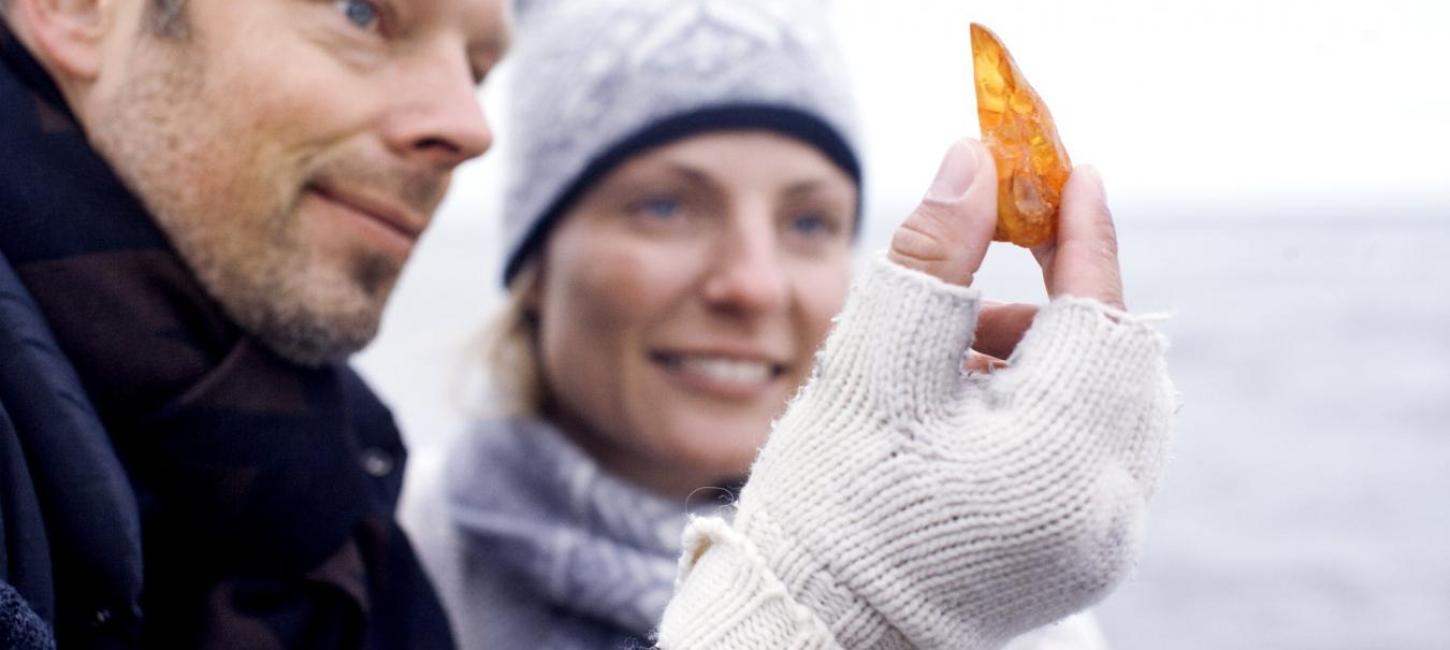Ravhuset Hennebjerg
Interested in an exciting combination of 65-million-year-old materials with sharp, minimalist and modern designs made using amber, jet, silver and mor...

A polished lump of amber is able to reflect and play with the sun’s golden rays like no other material. When you hold a piece against the light and twist and turn it, you’ll find yourself on one of the wide sandy beaches by the North sea on a hot summer’s day.
In Denmark there aren’t precious diamonds and rubies deep underground. But the northern gold hides deep in the ocean and during autumn storms it is whirled up and ends on the beahces on the Danish west coast.
Until the dark ages, amber was very sought after commodity across most of the world and Danish traders had some of the finest pieces, which had been washed ashore on the Danish west coast. Amber is used for making pearls and other jewellery, and for making beautiful figures, boxes, amulets, and small idols.
Especially the Greeks believed amber had supernatural abilities and called it the tears of the gods, the Romans used it for making truth serums, and in Denmark it was considered to have healing effects and used for different illnesses.
Amber comes from pine tree resin, from approximately 50 to 100 million years ago.
Denmark is located in an area with very high quality amber. But in order to find it, you must know a little bit of how to search for it.
First of all, it’s best to go in search of amber after a storm, right when the sea settles down again - typically in the fall or winter. Amber is then often hidden in the dark long piles of seaweed, sea sponges, and driftwood, that have washed ashore and not among the rocks and pebbles!
Amber is lighter than stone. If you compare the weight of your find with the weight of a rock the same size, the difference is obvious.
Amber has a softer sound than stone. You can hear that if you strike both gently against your teeth.
If you scratch a piece of amber with your fingernail or a knife, the colour brightens.
Not many people are aware of it, but you can also find amber by the fjord. Especially in the area around Hemmet, Skuldbøl, and Skaven Strand on the eastern side of the fjord, you can find the golden prehistoric lumps. Former pastor at Helligåndskirken in Hvide Sande, Thomas Kristensen, wrote a book about finding amber in that particular area. The book has been published in both Danish and German.
Below you'll find an overview of places where you can both see and buy beautiful pieces of amber.
Below you'll find an overview of places where you can either take a closer look at amber in an exhibition, join an amber tour or work with it yourself.